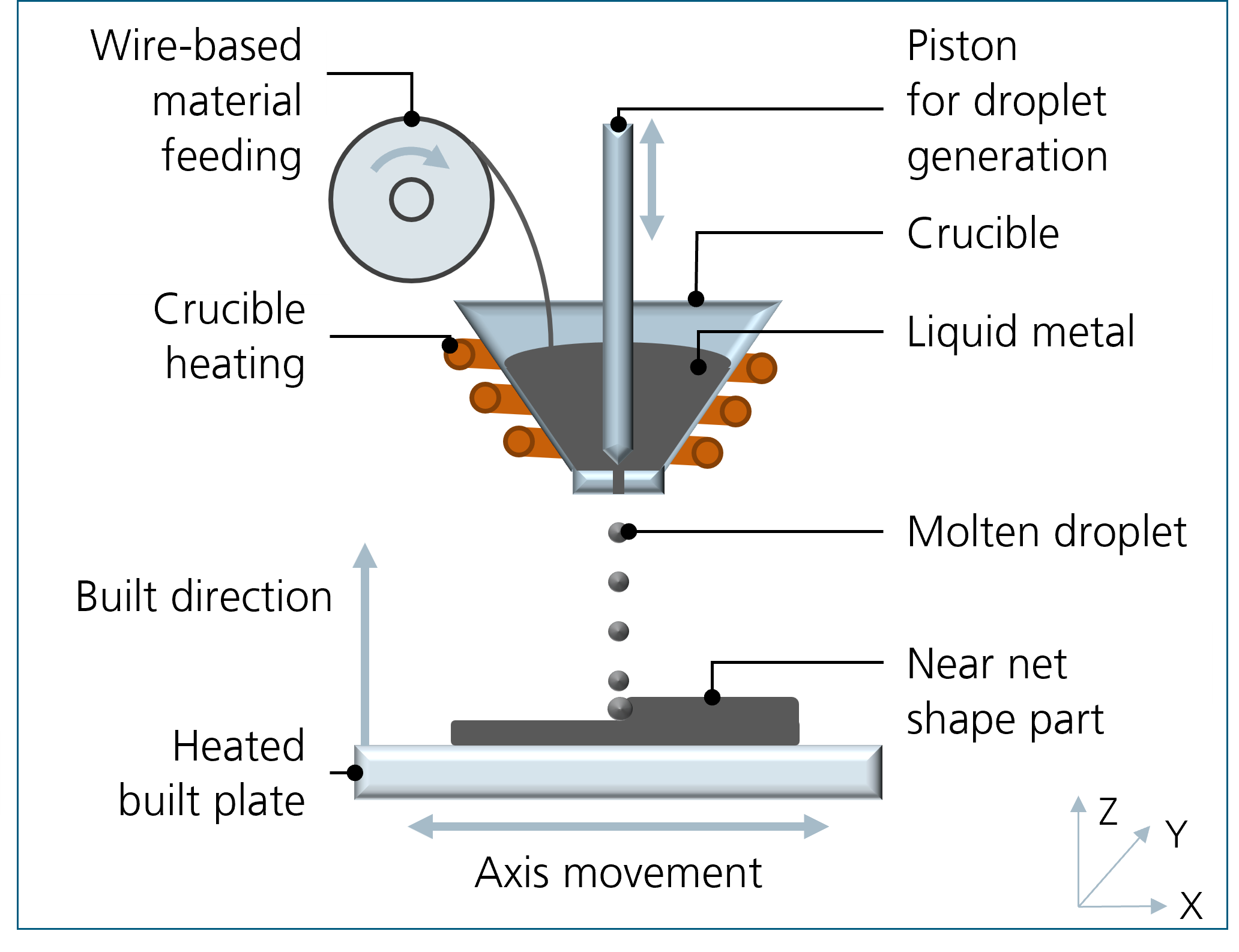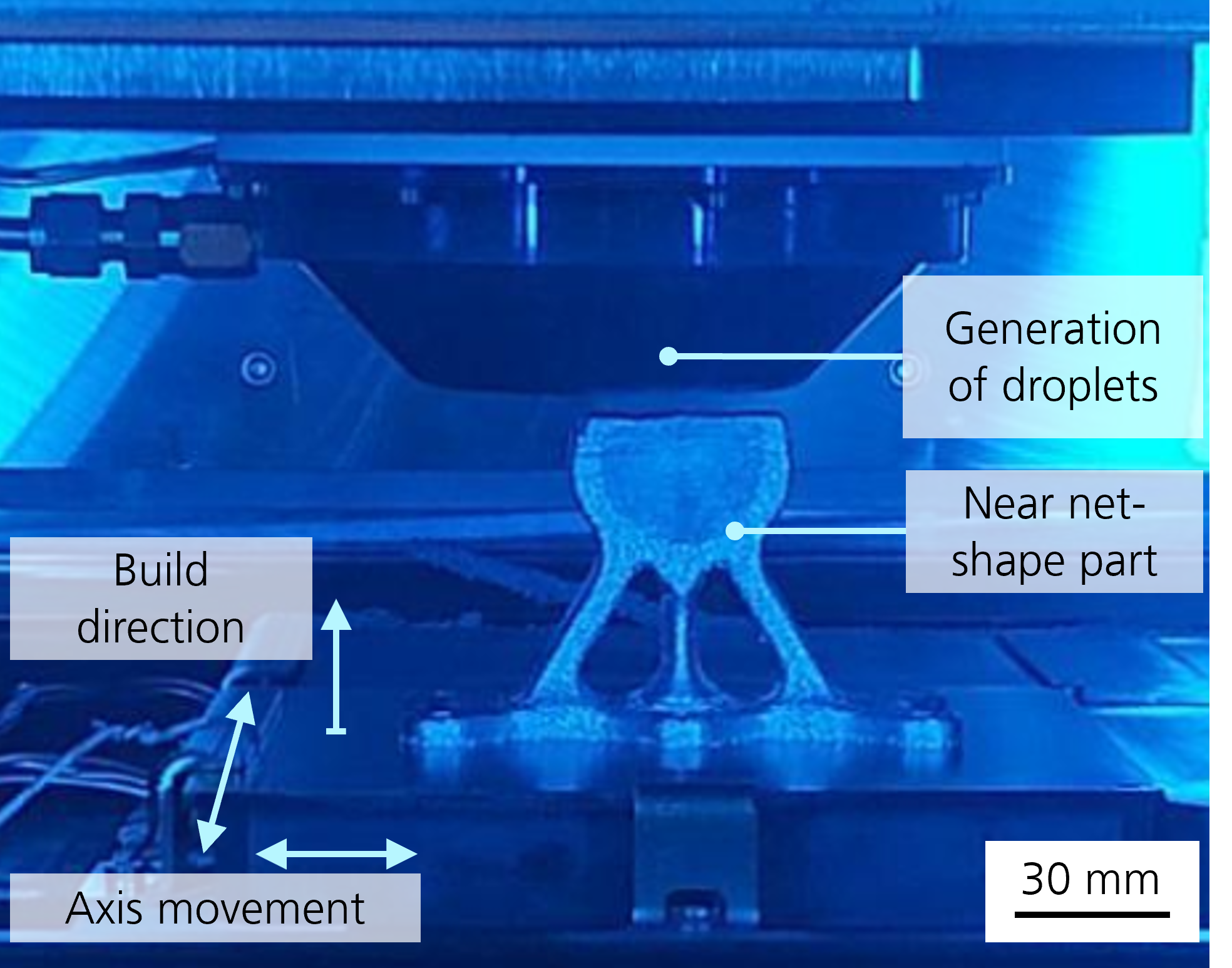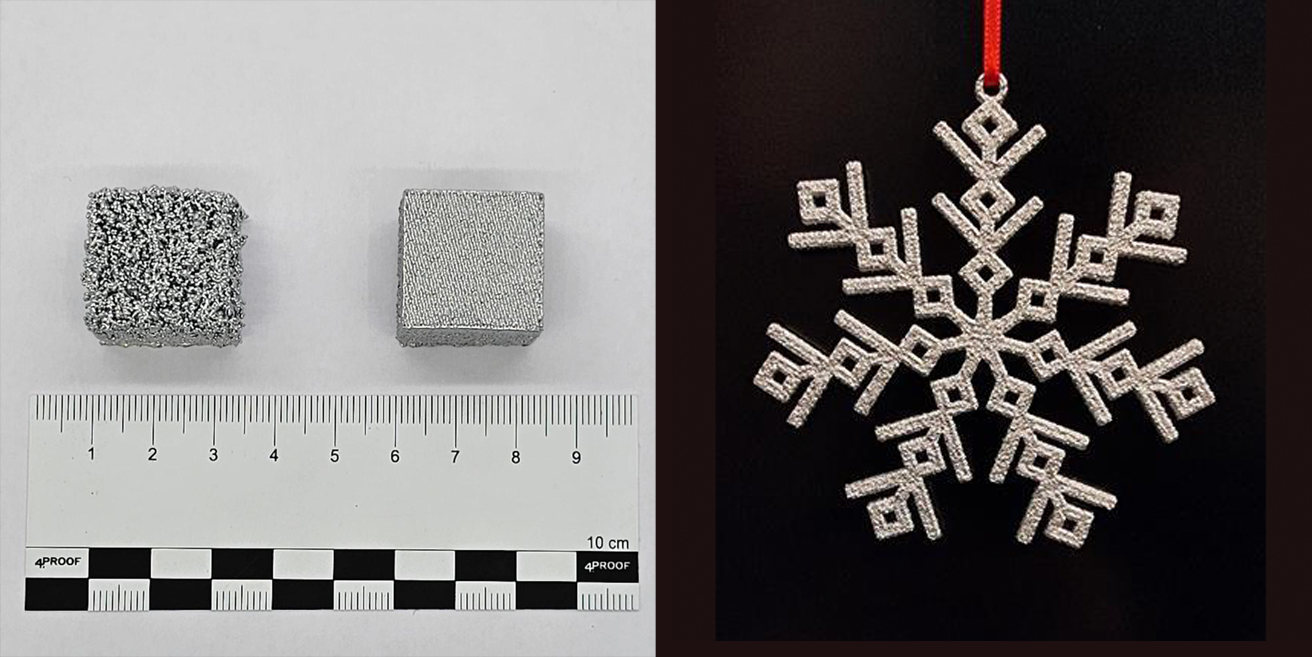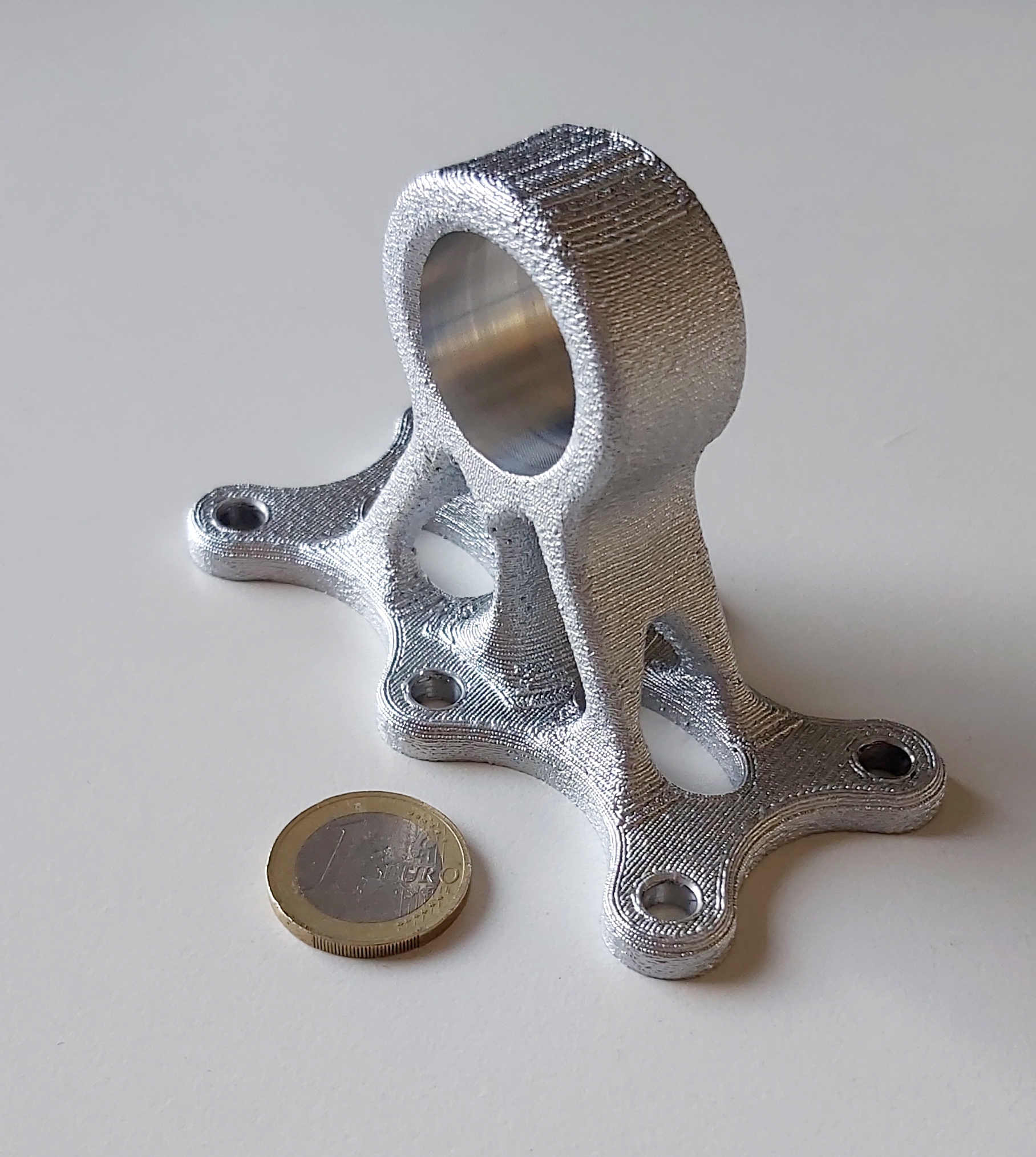Liquid Metal Printing - Development into a Gamechanger for Additive Manufacturing of Aluminum Alloys
What is Liquid Metal Printing?
Liquid metal printing (LMP) is still a young but promising additive manufacturing technology. The unique feature of the process is that the material is supplied in wire form and is applied drop by drop in a micro-casting process.
The liquid metal printing process belongs to the group of metal-based additive manufacturing processes in which components are built up layer by layer through repetitive material application. Unlike most welding-based processes, liquid metal printing does not require a beam source to melt the material, as the material is melted and applied drop by drop. The components are built up by using the material in the build direction in conjunction with a high-precision moving cross table.



